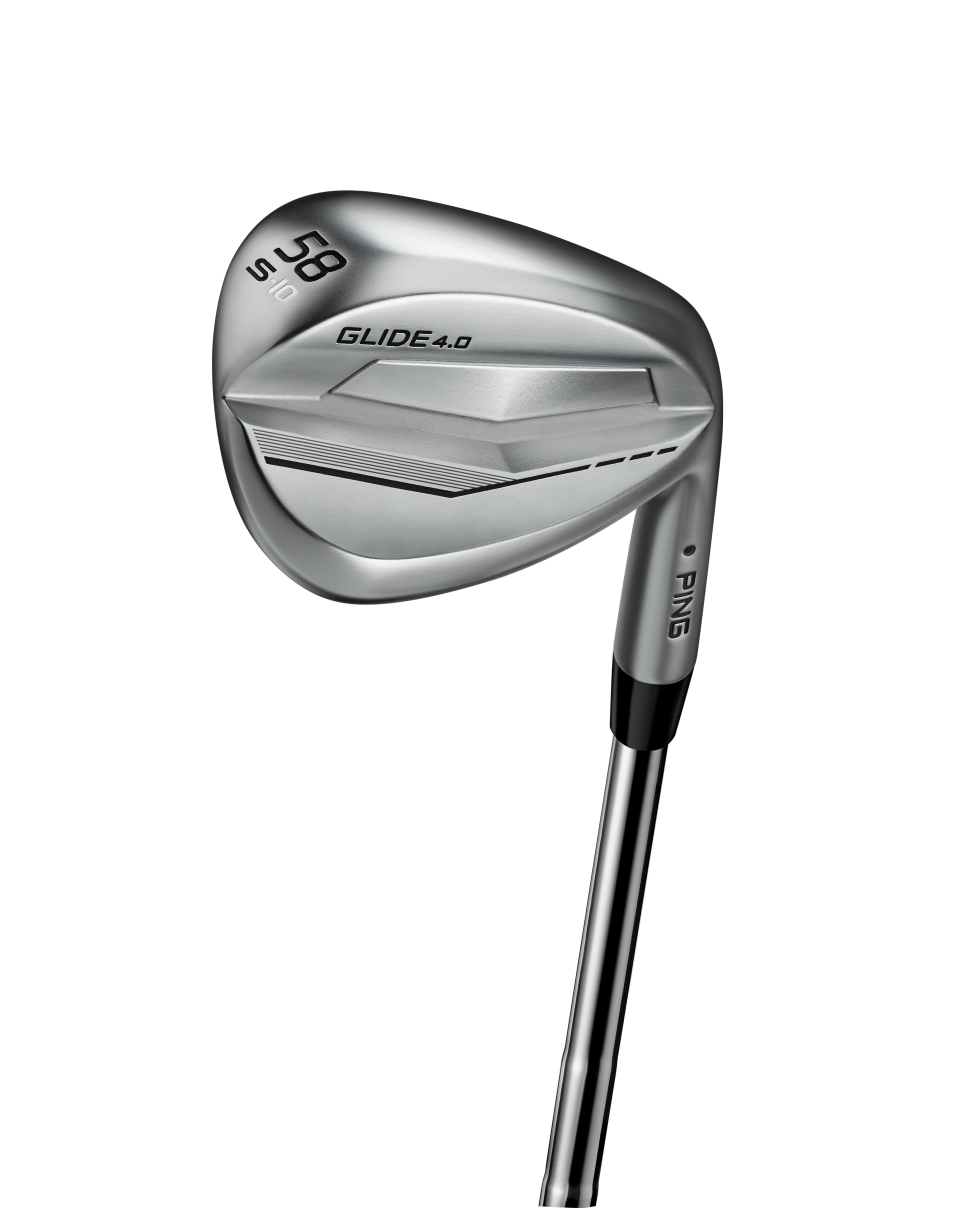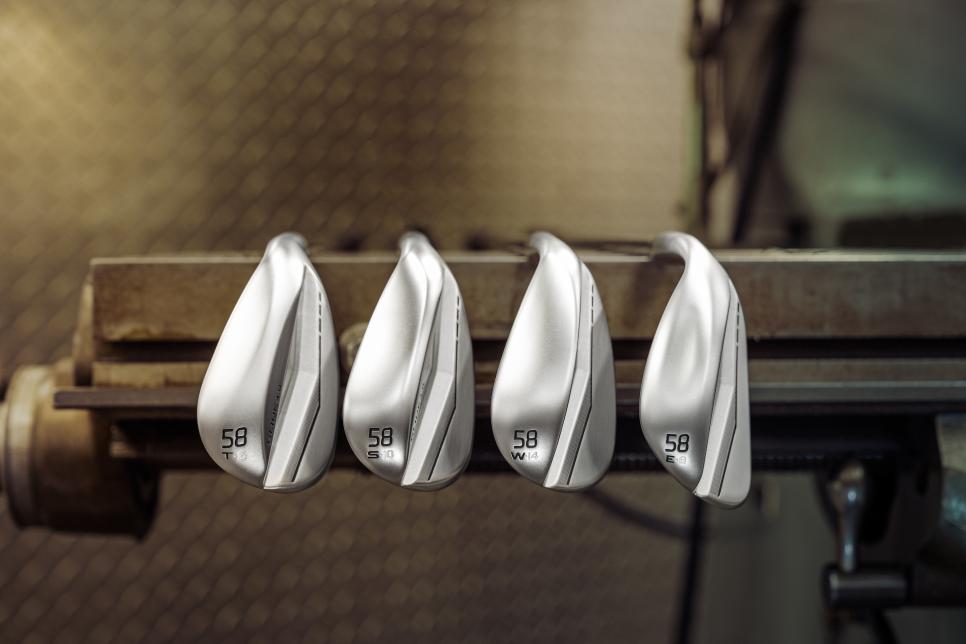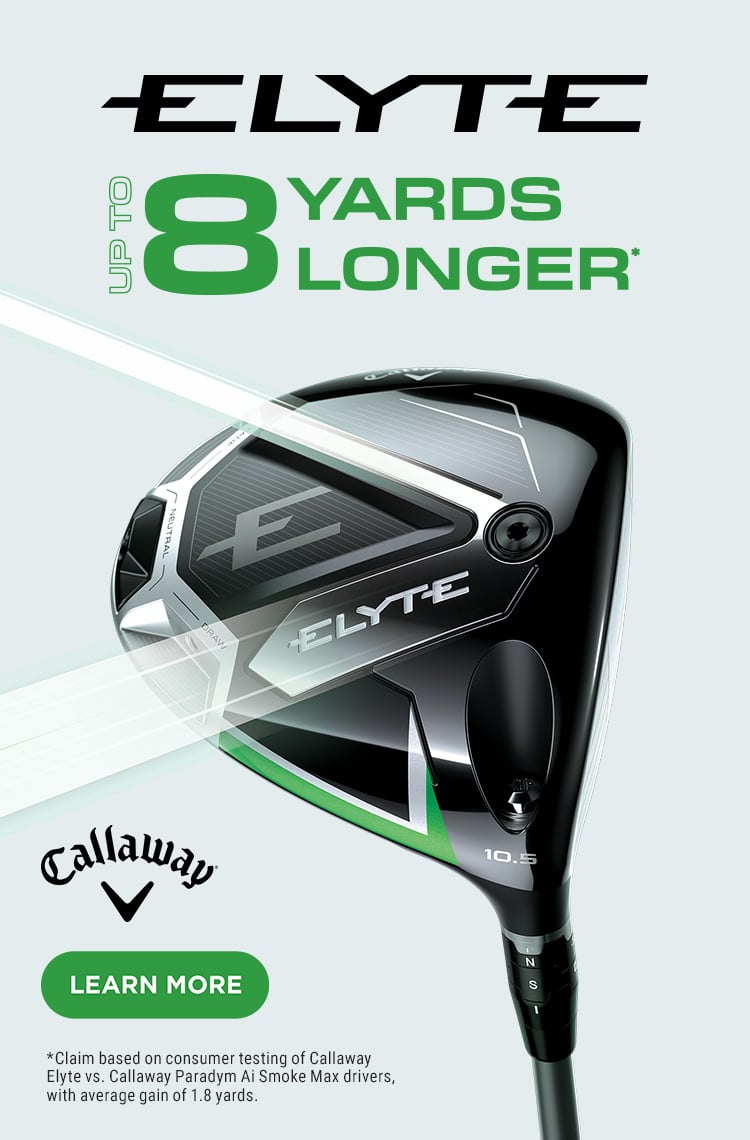WHAT YOU NEED TO KNOW: The Ping Glide 4.0 wedge line shows distinctive expansion from past models, including 17 loft/bounce combinations across four distinct sole grinds. It mixes slightly more compact T and S grinds with the larger profile W, and the Eye2-like E grind and enhances feel with a larger elastomer “custom tuning port” within the back cavity.
PRICE: $350 per club with stock steel shaft; $380 per club with stock graphite shaft
THE DEEP DIVE: As we’ve seen almost universally since the implementation of the groove rule now over 12 years ago, wedges continue to find new ways of improving the technological horsepower in what seems like the most perfunctory of golf’s tools. Though much of that improvement has focused on pushing the limits of the new limitations placed on groove shape and sharpness, there also have been efforts to improve friction in the flat areas between the grooves; relocate the centre of gravity for better spin, launch and distance control; and, of course, accommodate all sorts of swing and turf types with an alphabet soup worth of sole grinds.
Even grips have been lengthened for better control on the shortest of swings. The new Ping Glide 4.0 wedges do all that with an added emphasis on the one aspect of wedge design that might matter the most of all with the game’s predominant scoring clubs: feel.

Towards that end, the Glide 4.0 wedges are cast from a softer 8620 carbon steel, a switch from 431 steel in past models. In addition, the elastomer slugged in the back cavity behind the face – the “custom tuning port” – is 36 percent larger than on the Glide 3.0. That means more of that material backs up a larger amount of face area for improved feel on more shots. Similar to the elastomer in the i210 irons, that compound is formulated to measure at 30 A on the Shore hardness scale. Roughly, that makes the material feel somewhere between a rubber band and a pencil eraser, said Ryan Stokke, director of product at Ping.
“It is a flexible material,” he said. “So you can press on it and feel it, and because it’s soft that’s why it does give a really pleasing impact experience. It is elastic so it does provide that damping quality that is a very positive aspect.”
Like past models, the Glide 4.0 features a machined face and grooves. The face also includes the high friction emery finish first seen in last year’s Glide Forged Pro models. “Emery material is just a very jagged material,” Stokke said. “Where a lot of materials when you blast, it imparts a certain texture, this just puts a lot more across the face. This gives us a better prediction of impact and launch angle and spin rate.”

As seen first on the Glide 2.0 wedges, the grooves are distinct based on loft with the lower lofts featuring a steeper sidewall for for better control on full shots, while the higher lofts use a groove where the wall angle is eight degrees more open, exposing a sharper groove edge radius. That keys better spin on finesse shots around the green.
The Glide 4.0 continues the full range of loft, bounce and sole grinds featured in the Glide 3.0, with meaningful enhancements for each of the four sole grinds. On both the S and T grinds, the overall blade length was reduced about .05 inches for a more compact look, which also includes streamlining the hosel and leading edge transition areas. The W and E grinds are a little larger profile, but in general the Glide 4.0 size-wise rests right in between the Glide Forged Pro and the Glide 3.0.

The S grind is available on seven lofts from 46 to 60 degrees, the widest assortment of the four grinds, and features heel and trailing edge relief and a rounded leading edge. The T grind, a low-bounce option for the higher lofts, features a higher leading edge bounce and increased bounce in the centre. The W grind, a wider sole for more forgiveness on steeper swings, is ideal for square-face shots and bunker shots. Finally, the E grind evokes the higher toe shaping of the iconic Eye2 design with a tapered hosel, dished sole and improved leading edge for better bunker play.

